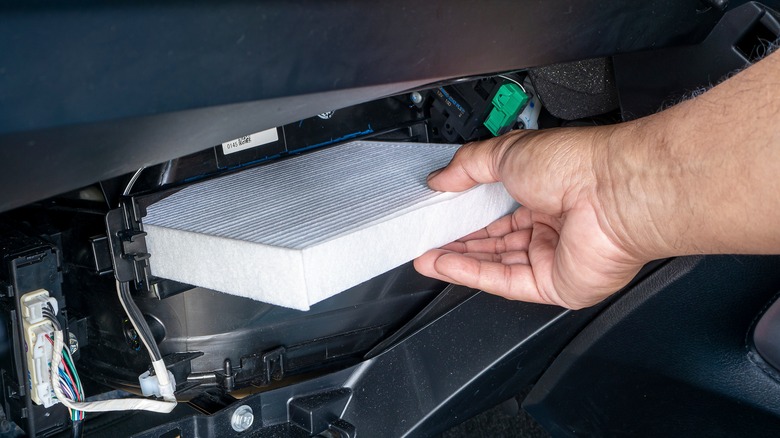How To Save Money When Replacing Your Car's Air Filter
All vehicles require consumable materials like oils, coolants, brake fluids, and filters to function correctly. However, one of the most neglected parts of a gasoline car is the air filter, particularly the engine and cabin filter. Any vehicle has at least two air filters, one for the engine and another for the HVAC or air conditioning.
Depending on the make and model of your ride, changing the air filter once a year or every 12,000 miles will keep the engine running smoothly. Furthermore, inspecting the air filter should coincide with regular oil changes. Poor gas mileage, mediocre performance, and a check engine light can be signs of a dirty or clogged air filter.
Meanwhile, the cabin filter needs replacing every 15,000 miles, but other manufacturers could recommend longer intervals of 25,000 to 30,000 miles. The reality is you can swap the cabin filter regularly to avoid respiratory problems like asthma, allergies, sinus infections, etc. As the name suggests, the cabin filter cleans the air inside your car, ensuring you and the passengers have cleaner air to breathe.
DIY air filter replacement
Since the cabin filter is typically under the dashboard or behind the glove box, it's not unusual for car owners to forget to inspect one of the most critical aspects of a modern HVAC system. If your car's A/C has a weak airflow (even at the highest fan speed setting), produces a slight whistling sound behind the air vents, has an unpleasant odor when turning on the A/C, or if the system is noisy when heating or cooling, the signs point to a dirty or clogged cabin filter.
The good news is you don't need to spend big money at the dealership to remedy the issue. Barring any significant problems with the A/C (like a dirty evaporator or a malfunctioning expansion valve), changing the cabin filter is typically the first-aid solution to the abovementioned issues. Dealerships could charge $100 for parts and labor, but you can do it for less than $30.
You could buy a cabin filter online or at the dealership. But to save money on labor, park your car, turn off the engine, and open the glove box. For some vehicles, unscrewing the glove box hinges could require a Philips screwdriver. But for most cars, mildly pressing on both sides of the glovebox is enough to tilt it lower or remove it altogether to access the cabin filter tray behind. The final step is to press the tab, slide the old filter away from the tray, and insert the new filter in the same direction.
